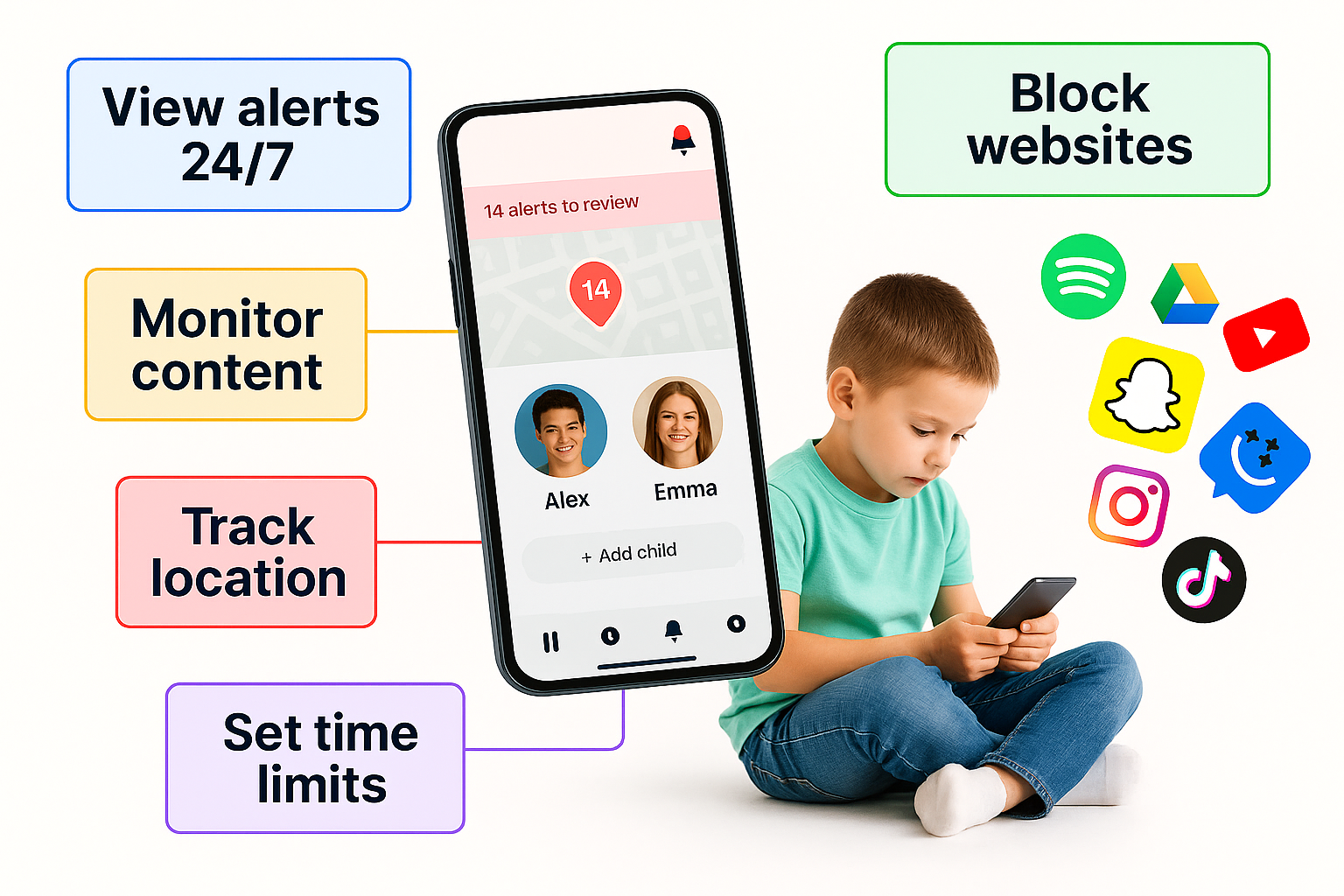🛡️ A Parent’s Guide: The Best First Phone for Kids in 2025
Why Parents Are Rethinking Kids’ First Phones
For today’s families, phones are everywhere. Children see parents, siblings, and friends using them constantly — so it’s natural for them to want one too. But a child’s first phone shouldn’t be just another gadget. It should be a safe step into independence, built with responsibility in mind.
📊 What Age Is Best for a First Phone?
There’s no universal answer. One child may be ready at 10, another not until 14. What matters is maturity and responsibility.
Surveys suggest:
- 45% of parents feel ages 12–14 is ideal.
- 16% think ages 9–11 is appropriate.
- 28% believe waiting until 15–17 is best.
Still, data shows more kids are getting phones younger than ever. For example, 30% of 8–9 year olds now own a phone, up from just 11% in 2015. By 14, nearly 9 out of 10 teens have their own device.
✅ Signs Your Child May Be Ready
Before buying a first phone for a 10 year old or tween, ask yourself:
- Do they handle chores and responsibilities well?
- Are they good at following household rules?
- Do they often lose or break things?
- Would not having a phone affect their ability to stay connected with friends?
A phone is a privilege. Readiness depends more on responsibility than age.
📱 What Type of Phone Should You Choose?
Not all phones are equal. Here are options parents are considering in 2025:
1. Best Non-Smartphone for Children
Simple devices designed for kids often remove distractions like web browsing and apps. These are perfect as a starter phone for tweens who need safety over features.
2. Safe Smartphone Alternatives
Some devices look like smartphones but come without social media, app stores, or internet. These safe smartphone alternatives for children let kids text, call, and use GPS without the risks.
3. Parental Control Phones
If you want more flexibility, a parent-approved phone for kids with built-in parental controls can strike the right balance. You’ll be able to limit usage, block unsafe content, and set screen time limits for children’s phones.
4. Budget-Friendly Options
Cost matters. An affordable first phone for kids might mean starting with a prepaid plan or entry-level device, then upgrading later.
🛡️ Safety First: Rules Every Family Should Set
Whatever phone you choose, safety comes from guidance. Discuss both benefits and risks with your child. Set clear expectations like:
- No phones during meals or after bedtime.
- Homework first, then screen time.
- Ask before downloading apps or games.
Many families even create a contract for kids phone use. Writing down rules and consequences helps children understand responsibility from day one.
🚩 Red Flags to Watch For
Even with safe devices, parents should watch for signs of trouble:
- Anxiety after being online.
- Trouble sleeping due to late-night use.
- Sudden drop in grades or activities.
- Withdrawal from friends or family.
In these cases, setting stricter phone safety rules for families or reviewing limits can help.
🌟 Be the Example
Children model what they see. If parents are always glued to phones during family time, kids will follow that pattern. Show balance by putting devices aside at dinner or during special activities.
The best first phone for kids isn’t about giving them the fanciest gadget — it’s about giving them freedom while keeping them safe. Whether you choose a basic kids phone without internet, a starter phone for tweens, or a parent-approved device with parental controls, what matters is setting healthy habits from the start.

